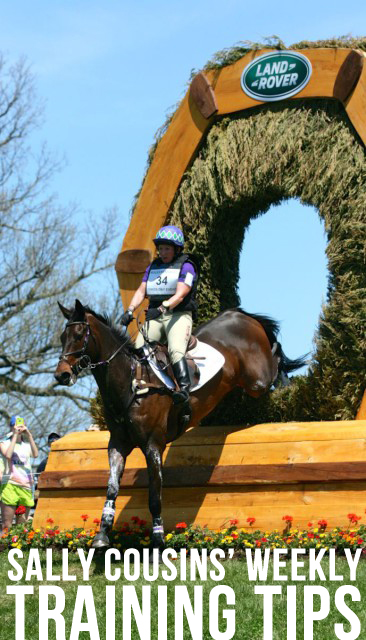We are delighted to host Sally Cousins as our newest guest blogger, as she shares her wealth of knowledge with us in the form of weekly training tips. We hope these nuggets of information can be integrated directly into your program at home and can influence the way you ride and train your horses. Be sure to check out both the Sally Cousins Eventing website and keep up with her on Facebook.

From Sally:
Finding the right bit for a horse can really improve its way of going. When I’m deciding what bit to use on a horse, I start by determining what type of mouth piece it prefers. Does it like a single joint, a double joint or a mullen mouth? I will often ask my vet or dentist if there is anything they have seen in the construction of the horse’s mouth that could help me narrow that down. For example, does it have a particularly fat tongue, low pallet or fleshy bars?
If a plain snaffle isn’t enough I might change the surface of the snaffle but keep the same mouth piece, adding rollers or a twist. As I move the horse up the levels and increase the speed, I might have to go even further. I then try to figure out what type of pressure the horse will tolerate. For some horses leverage works well, others a bit with a curb chain, sometimes a bit with a port, or more nose pressure. You can further tweak that by adjusting the type of nose band you use.
If you have a horse that’s not great in the show jumping, I have found that it’s very important to have a completely different bridle for the show jumping than the one I use for cross country. This helps them mentally switch gears and makes it clearer when we want to use a different canter. For a number of horses that aren’t particularly clean show jumpers, a hackamore can be very effective, but I’m not a fan of them for cross country because I have trouble turning with them. This is also true for bits with leverage, the longer the leverage on the bit the harder the steering becomes.
If I have a horse in training that starts to become fussy or seems unhappy in its work I check to see the last time the horse had its teeth done. Even if they are not due to be done, I will still have them checked to be sure the horse hasn’t done something to damage a tooth or develop an infection.
It is also important to match the rider and the horse. I always keep in mind what the previous rider used. But if the horse is going from a larger male rider to a smaller women chances are the same bit will not work as well.


















